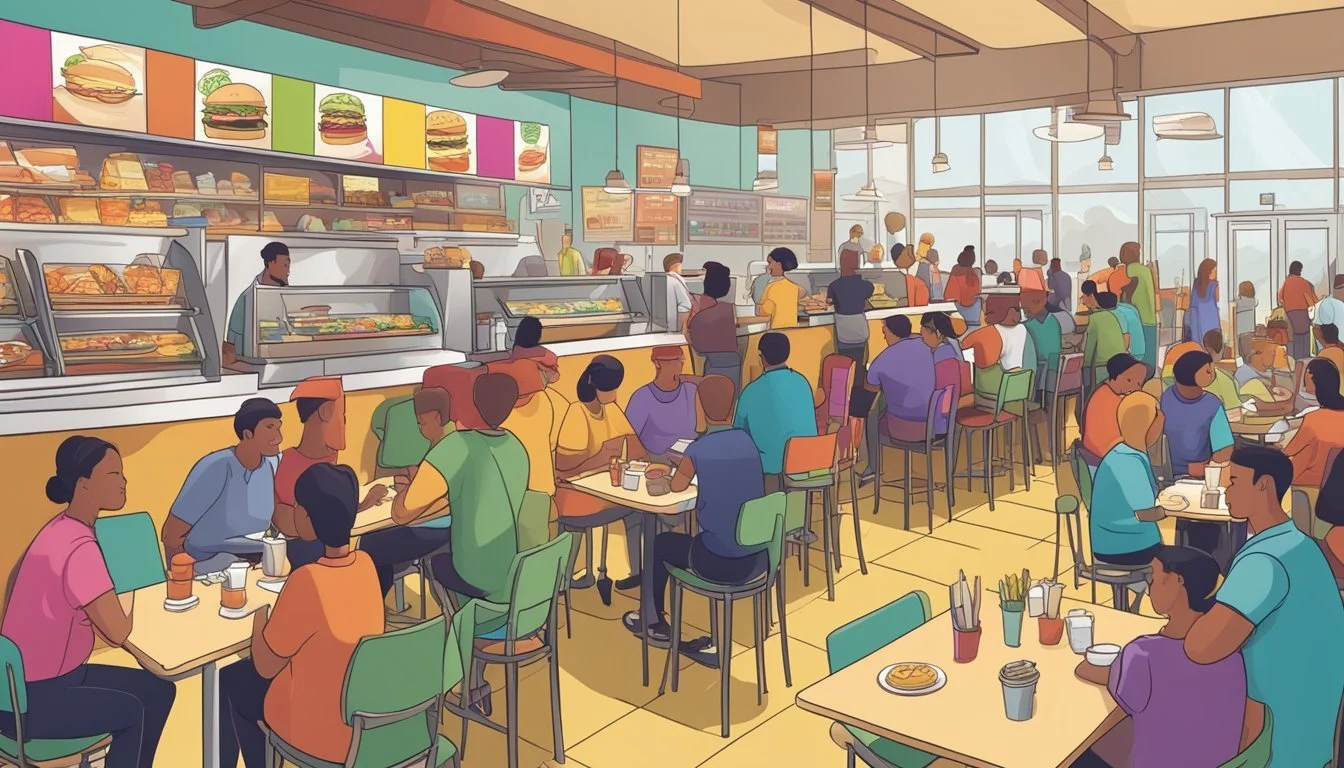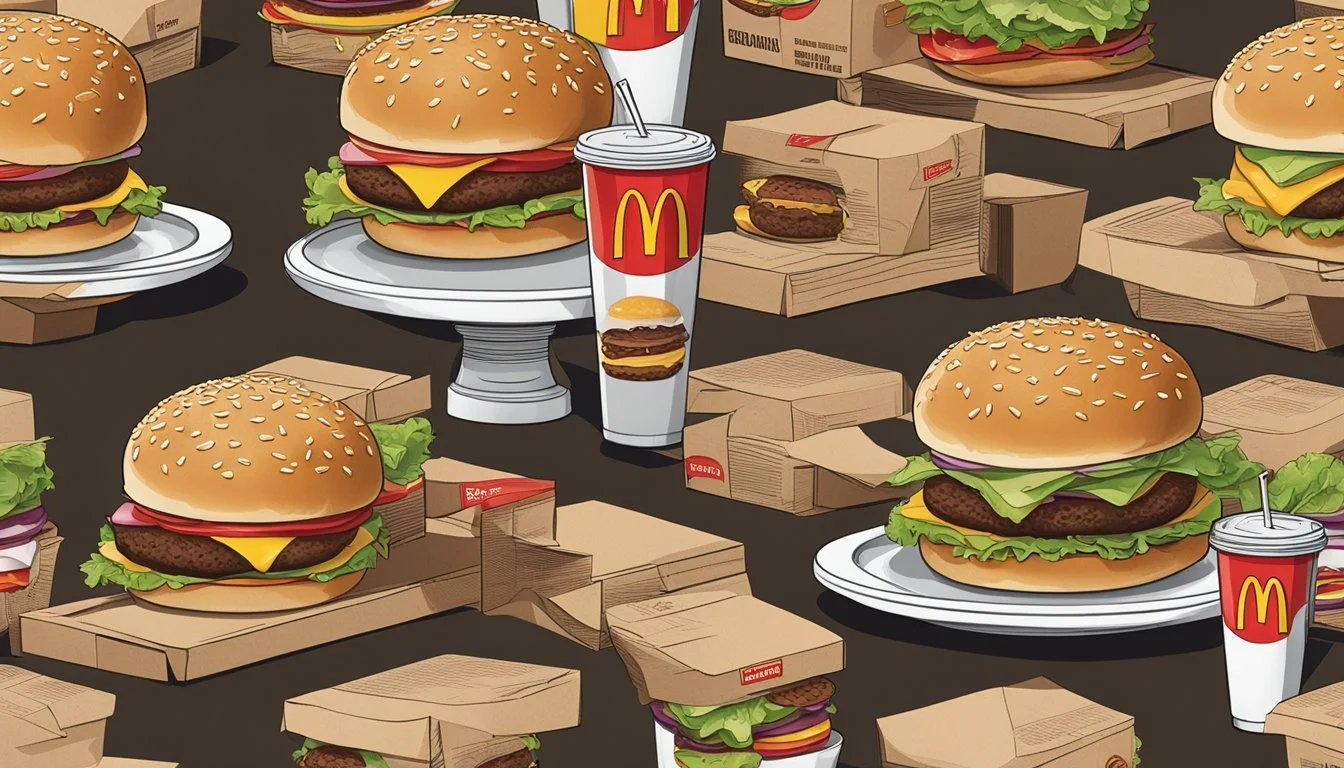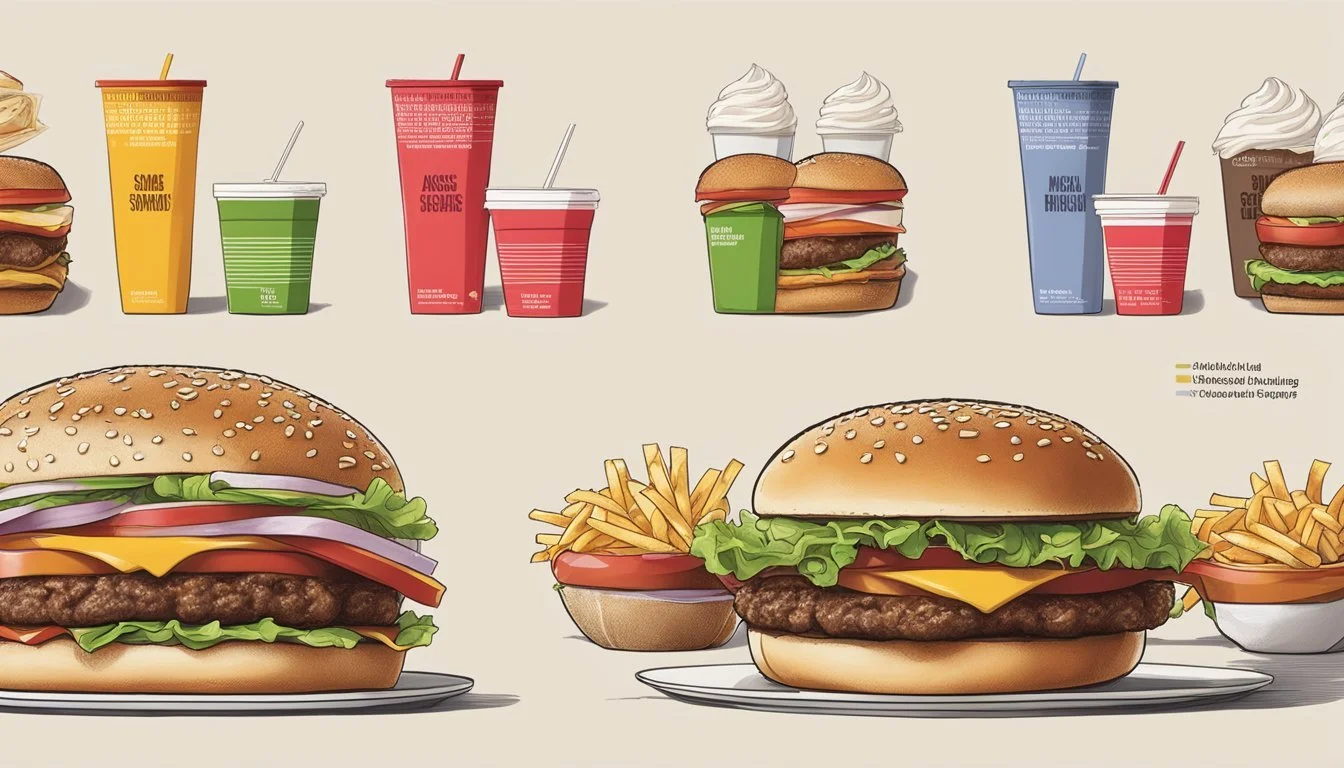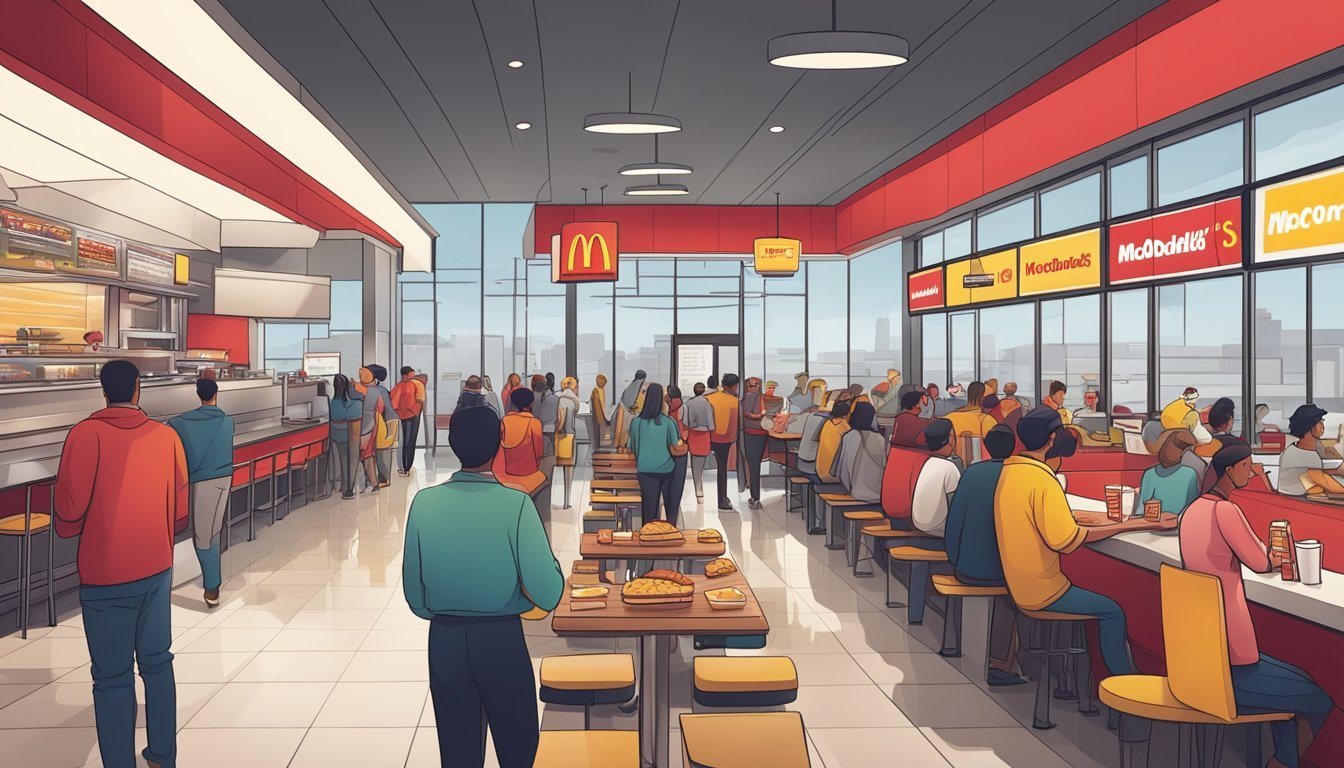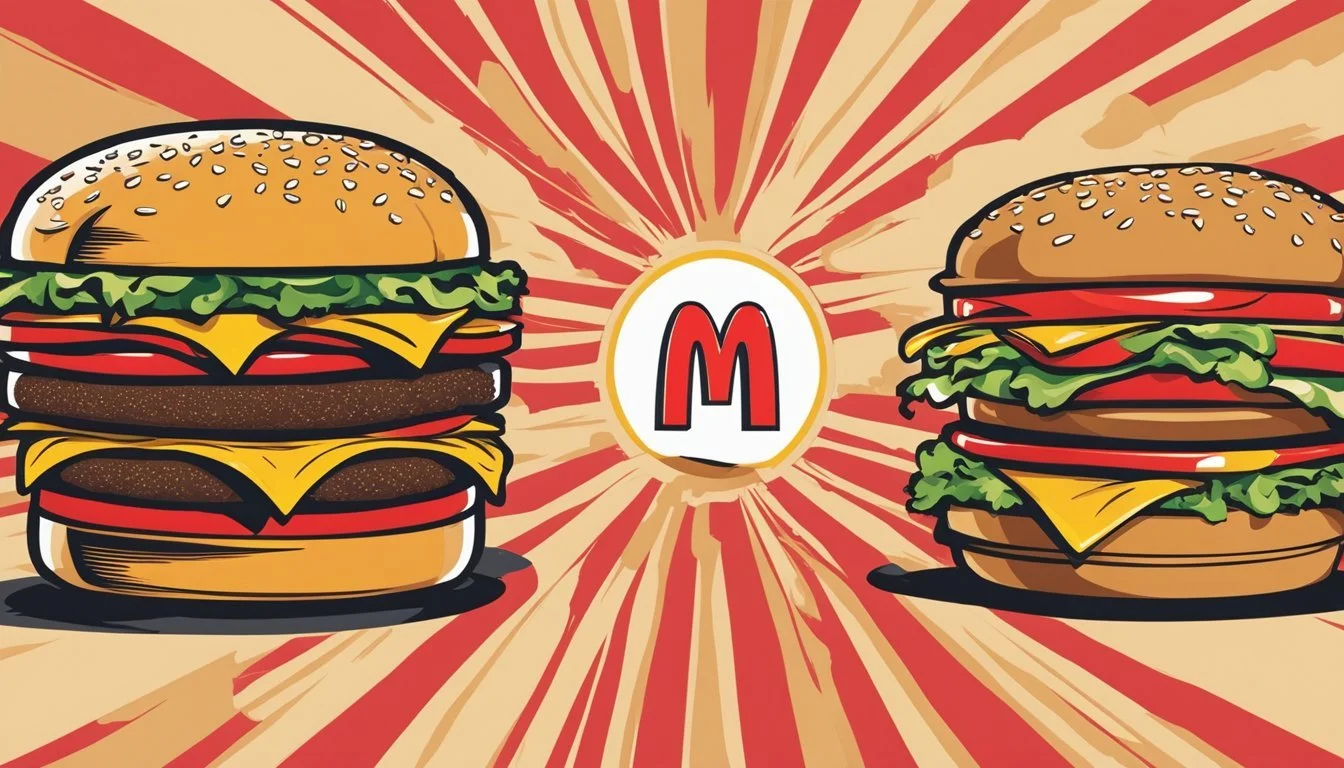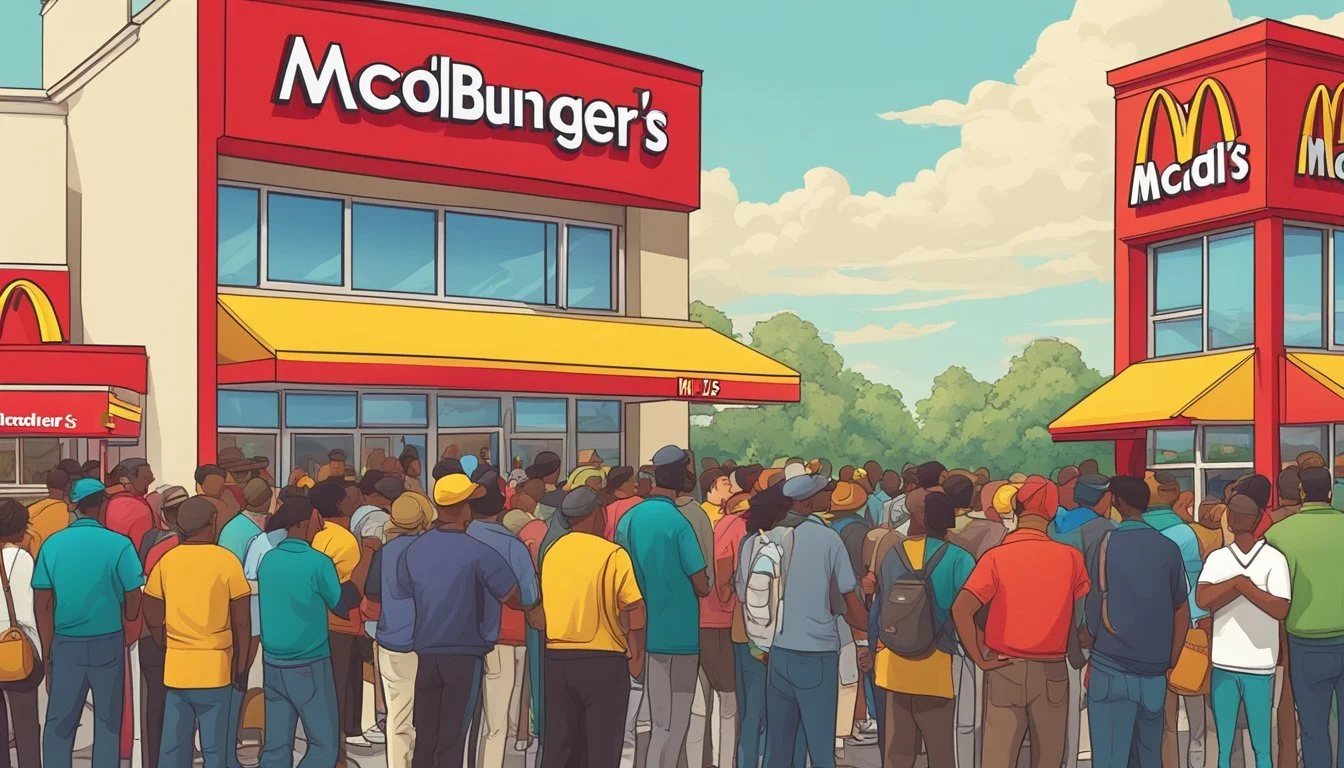McDonald's vs Smashburger
An Unbiased Comparison of Burger Quality
In recent years, the battle for burger supremacy has heated up, with McDonald's and Smashburger at the forefront of the conversation. McDonald's, a fast-food titan with a global presence, has long been known for its consistent offerings and convenience. On the other hand, Smashburger, a newer chain, has carved out a niche with its focus on smashed patties and a wide variety of toppings. Both chains aim to satisfy the seemingly insatiable appetite for burgers, but they approach their craft with markedly different philosophies.
While McDonald's offers a familiar and quick option for those on-the-go, featuring a menu that spans from breakfast items to desserts, Smashburger emphasizes a more specialized experience. Their approach to burger making involves smashing a ball of ground beef (What wine goes well with beef?) on a hot griddle to sear in the juices, creating a patty that's crispy on the outside and tender on the inside. This technique, coupled with artisanal toppings, positions Smashburger as a gourmet alternative within the fast-casual dining segment.
The debate on which is better is as much about personal preference as it is about the burgers themselves. McDonald's boasts decades of operational efficiency and widespread accessibility, making it a reliable staple for many. Smashburger's appeal lies in its quality ingredients and customized experience, offering a different take on the traditional American burger. Consumers weigh these factors differently, but whether they prioritize speed and familiarity over a crafted dining experience typically guides their choice between the two.
Brand Overview
As the fast-food landscape continues to evolve, the histories and brand identities of McDonald's and Smashburger come into sharp relief, highlighting their distinctive places within the industry. While McDonald's boasts a storied past and widespread recognition, Smashburger enters the scene as a modern contender focused on specialty offerings.
The History of McDonald's
McDonald's, a brand synonymous with fast food, began its journey in 1940 when brothers Richard and Maurice McDonald opened their first restaurant in San Bernardino, California. Known originally for its BBQ, McDonald's introduced the concept of "Speedee Service System" in 1948, revolutionizing the industry and setting the standard for fast food. This has propelled McDonald's into a global behemoth with a presence in over 100 countries.
The History of Smashburger
Smashburger entered the fast-food arena much later, founded in 2007 by Tom Ryan in Denver, Colorado. It swiftly distinguished itself with its "smashed-to-order" burgers, emphasizing high-quality ingredients and artisanal methods. Smashburger has since expanded rapidly, with hundreds of locations across the United States and internationally, catering to a consumer base looking for an elevated casual dining experience.
Comparing Brand Identities
The identities of McDonald's and Smashburger are a study in contrasts and competition. McDonald's is generally considered a universal staple, known for its Golden Arches, Happy Meals, and trademark Big Mac. It competes broadly across the fast-food market, with rivals such as Burger King, Wendy’s, and Dairy Queen. Its brand is associated with consistency and availability. In contrast, Smashburger focuses on a more premium product, positioning itself closer to chains like Five Guys and Shake Shack, which emphasize better ingredients and a more gourmet experience. While McDonald's prides itself on quick service and familiarity, Smashburger leans into a niche of burger connoisseurs looking for a different, perhaps more modern, taste profile within the fast-casual dining industry.
Menu Analysis
When comparing McDonald's and Smashburger, a detailed menu analysis reveals distinctions in burger varieties, side offerings, and dessert selections that reflect each chain’s unique approach to fast food cuisine.
Burger Varieties
McDonald's iconic menu features classics like the Big Mac, with its special sauce and middle bun, and the Quarter Pounder with Cheese, which is known for its larger beef patty. The regular Cheeseburger and McDouble, an offering with two beef patties, are mainstays for those seeking traditional options. In contrast, Smashburger's menu stands out with a signature technique for crafting burgers, like the Smashburger itself, which involves pressing the beef patty onto the grill for increased flavor and caramelization.
McDonald's Menu:
Big Mac
Quarter Pounder with Cheese
Cheeseburger
McDouble
Smashburger Menu:
Classic Smash
Bacon Smash
Spicy Jalapeño Baja
Side Offerings
While both burger chains offer the requisite French fries, Smashburger takes it a step further with seasoned fries offering bold flavors. McDonald's keeps it simple with classic fries and also provides healthier alternatives like apple slices. Here, difference in variety and health consciousness shines through.
McDonald's Sides:
French Fries
Apple Slices
Smashburger Sides:
French Fries (Seasoned)
Sweet Potato Fries
Onion Rings
Dessert Selections
Both chains offer a range of milkshakes, featuring classic flavors such as chocolate, strawberry, and vanilla. Smashburger typically adds a gourmet twist with their hand-spun shakes, possibly reminiscent of the offerings from Shake Shack, which is known for its high-quality, hand-spun shakes. McDonald's dessert options also include pies and soft serve, catering to a broader sweet tooth audience.
McDonald's Desserts:
Milkshakes
Apple Pies
Soft Serve Cones
Smashburger Desserts:
Hand-Spun Milkshakes
Cookies
Brownies
Burger Composition
In pitting McDonald's against Smashburger, the quality and composition of their respective burgers come under scrutiny, from patties and buns to cheese and condiments.
The Battle of the Patties
Smashburger's approach to crafting their burger patties is detailed and specific. Patties are made from fresh, 100% certified Angus beef, hand-packed into a ball and smashed on a hot grill to create a thin, caramelized crust. This method enhances the Maillard reaction, which is responsible for the rich, complex flavor profile. McDonald's, on the other hand, has historically used frozen beef patties, although they have introduced a line of burgers with fresh beef in an effort to elevate flavor and quality. Both restaurants cook their beef until it’s flavorful and juicy, but the texture and taste differ significantly due to the preparation methods.
Bread Matters: Buns and Toppings
The support structure of any burger is the bun, and both chains offer distinctive takes. Smashburger typically serves their burgers on a buttered bun that's toasted to add a layer of texture and flavor. McDonald's serves their iconic burgers like the Big Mac on a sesame seed bun, often praised for its softness and slight sweetness.
In terms of toppings, the options are vast. McDonald's staples like lettuce, pickles, tomato, and onions are often compared to Smashburger's similar yet reputedly fresher toppings. Smashburger also provides the ability to add premium items such as avocado and more extensive cheese options, which can elevate the burger experience through melty cheese goodness and additional flavors.
Cheese and Condiments Duel
The duel of the cheese and condiments is pivotal in distinguishing the burgers from each other. McDonald’s classic selections typically involve American cheese, which provides that classic melty consistency. Smashburger offers a broader variety of cheese, allowing for greater customization. As for condiments, both McDonald’s and Smashburger provide a familiar array: ketchup, mustard, mayo, and their own special sauces. Yet, the approach to the assembly can sway diners' preferences, with the precise layering influencing the overall taste and burger cohesion.
Cooking Techniques and Flavors
In the battle of burger joints, the cooking methods employed by McDonald's and Smashburger directly influence the flavors that they deliver. The contrast between grilling and smashing, as well as the seasonings used, defines the unique taste profiles of each brand's offerings.
Grilling vs. Smashing
McDonald's primarily uses a grill for cooking their burgers. Grilling involves cooking the patties over a source of heat, which can be an open flame or a griddle surface. The process imparts a characteristic seared taste, which is associated with traditional fast food burgers. In contrast, Smashburger employs a technique known as smashing. Burgers are smashed onto a hot flat-top griddle, greatly increasing their surface area. This method enhances the Maillard reaction, where the beef's proteins and sugars brown and create a deeply flavorful crust. This crust is key in delivering a rich umami flavor profile that is distinctive of smash burgers.
Technique Comparison:
McDonald's Grilling:
Uses heat source (grill or flat griddle)
Produces a seared, classic fast food burger flavor
Smashburger Smashing:
Patties are smashed on a flat-top griddle
Increases Maillard reaction, enhancing flavor
Seasonings and Taste Profiles
McDonald's burgers are seasoned in a straightforward manner, generally with just salt and pepper, delivering a familiar taste that patrons across the world can easily recognize. Meanwhile, Smashburger seasons their patties more attentively, which may include a proprietary blend of spices in addition to salt and pepper. This not only adds more depth to the flavor but also complements the enhanced browning and umami from the smashing method. The result is a more flavorful and nuanced burger with a noticeable complexity compared to the simpler flavor profile of fast food burgers like those from McDonald's.
Seasoning and Flavor:
McDonald's:
Simple seasoning with salt and pepper
Recognizable, consistent flavor suitable for fast food
Smashburger:
Carefully seasoned, sometimes with a unique spice blend
Complex and pronounced flavors due to spice diversity and cooking technique
In terms of flavor, the differences between the burgers at McDonald's and Smashburger can largely be attributed to how the patties are cooked and seasoned. Each technique produces a distinctive taste profile that caters to different preferences.
Nutritional Comparison
When choosing between McDonald's and Smashburger, nutritional value plays a significant role for health-conscious consumers. Analyzing the calorie content, nutrient breakdown, and sourcing of ingredients can offer insights into which burger joint might suit one’s dietary preferences.
Calorie Count and Nutrient Content
McDonald's offers a range of burgers, with the calorie count for a standard hamburger at approximately 250 calories. A basic McDonald's cheeseburger contains around 300 calories, with 12 grams of fat, 15 grams of protein, and 33 grams of carbohydrates. In contrast, Smashburger’s Classic Smash burger lists at about 670 calories, with 30-40 grams of fat, 34 grams of protein, and 47 grams of carbs.
Comparison Table:
McDonald's Hamburger
Calories: ~250
Fat: ~9 g
Protein: ~12 g
Carbs: ~31 g
McDonald's Cheeseburger
Calories: ~300
Fat: ~12 g
Protein: ~15 g
Carbs: ~33 g
Smashburger Classic Smash
Calories: ~670
Fat: 30-40 g
Protein: ~34 g
Carbs: ~47 g
Smashburger's higher calorie options can be attributed to their larger patties and the inclusion of more toppings, which often include rich sauces and cheeses.
Ingredient Quality and Sourcing
Smashburger prides itself on using certified Angus beef, which they market as a higher-quality option compared to some competitors. Angus beef is known for its marbling, which can lead to higher fat content but also contributes to flavor and tenderness.
McDonald's has, over the years, made efforts to improve the quality of their ingredients. They've made commitments to sourcing 100% pure beef patties without fillers, additives, or preservatives. While antibiotics are commonly used in livestock, both McDonald's and Smashburger have policies addressing the responsible use of antibiotics in their beef. As for hormones, federal regulations prohibit the use of hormones in raising hogs or poultry, which are sometimes used in the products of both chains.
The choice between McDonald's and Smashburger may depend on one's dietary goals — whether they prioritize lower-calorie options or the perceived quality of ingredients.
Consumer Experience
When comparing McDonald's and Smashburger, distinct differences emerge in terms of popularity, service quality, and consumer value perception. These factors collectively influence a customer's dining experience.
Popularity and Cultural Impact
McDonald's is an iconic brand recognized globally, with a deep-rooted presence in American culture. It has leveraged its familiarity and nostalgic value to maintain a stronghold in the fast-food industry. In contrast, Smashburger is building its own reputation as an innovative player in the fast-casual dining segment, particularly gaining traction for its premium offerings and unique twists on the classic burger.
McDonald's: A symbol of American fast food with significant influence across a broad demographic.
Smashburger: A growing challenger, recognized for elevating the standard burger experience.
Service and Atmosphere
McDonald's restaurants are designed for convenience and efficiency, catering to the needs of quick service and high customer turnover. Smashburger, as per industry insights, aims to provide an enhanced dining experience with emphasis on customer satisfaction and interactive service, distinguishing itself from the typical quick-service restaurant (QSR) model.
McDonald's Atmosphere: Fast and functional with a focus on delivering food quickly.
Smashburger Atmosphere: More engaging, with an emphasis on a premium dining experience.
Price and Value Perception
Customers perceive value based on the balance of cost, quality, and the overall dining experience. McDonald's is typically associated with affordability and a consistent product. Smashburger positions itself in a higher price bracket, justifying this with higher-quality ingredients and a more experiential dining environment.
McDonald's
Price Point: Lower, budget-friendly
Quality: Consistent, standard fare
Experience: Quick convenience
Smashburger
Price Point: Higher, targeting premium
Quality: Premium, with unique offerings
Experience: Experiential and engaging
Customers often perceive the extra cost at Smashburger as a fair trade-off for the improved quality and dining experience.
Innovation and Trends
In the fiercely competitive fast-food industry, innovation and adaptability are central to a brand's success. McDonald's and Smashburger continuously evolve their menus and strategies to align with the latest consumer trends, from offering novel flavors to prioritizing sustainability.
Adaptation to Consumer Preferences
Both McDonald's and Smashburger have shown agility in adapting to changing consumer tastes. McDonald's, for instance, has broadened its menu to include more health-conscious options like salads and fruit, responding to the public's demand for healthier fast-food alternatives. Meanwhile, Smashburger has tailored its approach by focusing on the quality and flavor of its burgers, with the signature smash technique creating a caramelized exterior coveted by aficionados.
Midwest Roots: Smashburger's burger style, having originated in the Midwest, leverages the "smash" technique for enhanced taste.
Burger Customization: Both chains have adapted by offering customizable burger experiences.
The Role of Limited-Time Offers
Limited-Time Offers (LTOs) are a strategic tool used by both chains to create buzz and attract customers seeking new experiences. McDonald's periodically releases LTOs to draw public interest, like the return of the iconic McRib. Smashburger utilizes LTOs to test new flavors, potentially incorporating successful items into the regular menu based on customer feedback.
McDonald's McRib: A customer favorite, returning seasonally as a limited-time option.
Smashburger LTOs: These offers not only bring novelty but also allow the burger chain to stay current and innovative.
Environmental and Health Consciousness
In the realm of environmental and health consciousness, both brands have taken steps to cater to the growing market segment that values sustainability and nutritional quality. McDonald's has introduced options like the McVeggie burger to cater to vegetarians, and in some regions, vegan options are also available.
Vegan Options: Acknowledging the vegan trend, both chains are experimenting with plant-based menu items.
Sustainability Initiatives: They have adopted more eco-friendly practices, such as recyclable packaging and responsibly sourced ingredients.
Smashburger, on the other hand, competes by prioritizing a smaller, quality-focused menu that emphasizes premium ingredients. They offer distinctive options like the BurgerFi burger, which appeals to consumers looking for premium, casual dining experiences within the convenience of a fast-food setup.
Conclusion
When comparing McDonald's and Smashburger, it is important to assess them based on specific criteria, such as burger quality, variety, affordability, and accessibility.
Burger Quality:
Smashburger is known for their technique of smashing patties on a hot griddle, creating a caramelized crust, which can enhance the flavor. McDonald’s, aiming for consistency and quick service, offers a standard taste that is recognizable worldwide.
Variety:
McDonald’s provides a wider array of menu options beyond burgers, catering to a more diverse customer base. Smashburger, on the other hand, focuses on a narrower menu, but with more customization options for their burgers.
Affordability:
McDonald’s tends to be more budget-friendly, with a range of prices that often beat out competitors, including Smashburger. This can be a significant factor for consumers who prioritize cost over other considerations.
Accessibility:
McDonald’s boasts a significant global presence, ensuring easy access to their products for many consumers. Smashburger, while widely popular, has a smaller footprint, potentially impacting diner convenience.
Consumer Preference:
Ultimately, consumer preference plays a pivotal role. Some may prefer McDonald's for its value and ubiquity, while others may lean towards Smashburger for its specialized preparation and gourmet-style options.
In summary, choosing between McDonald's and Smashburger is a matter of personal preference, with each restaurant having its own strengths. McDonald's offers affordability and familiarity, while Smashburger focuses on quality and a unique burger experience.

